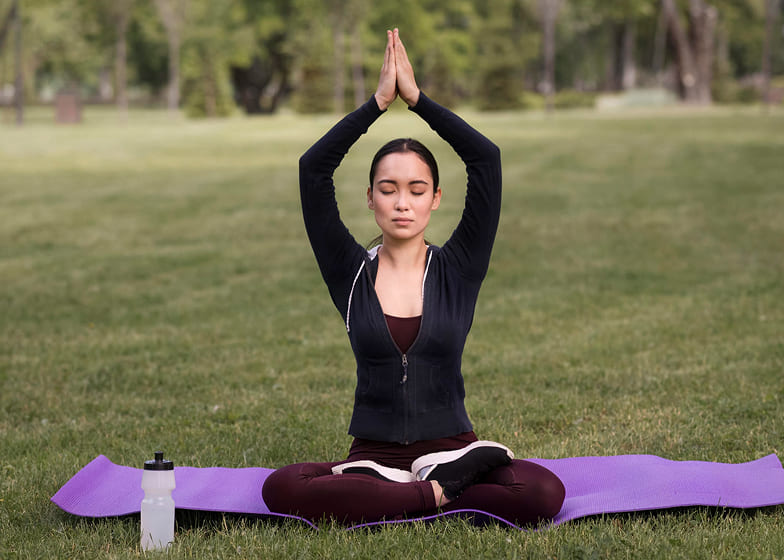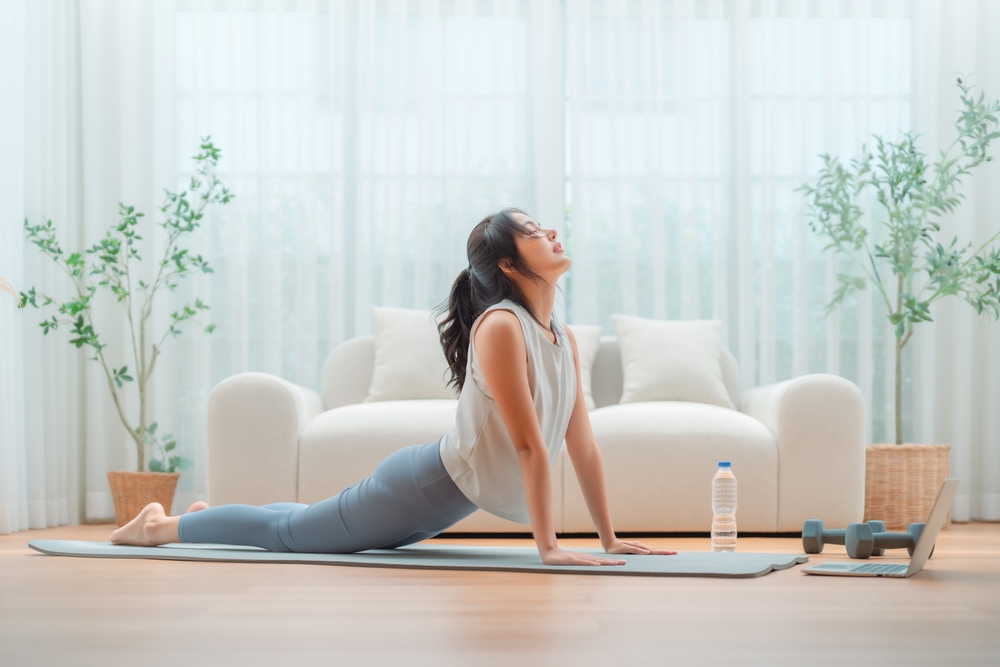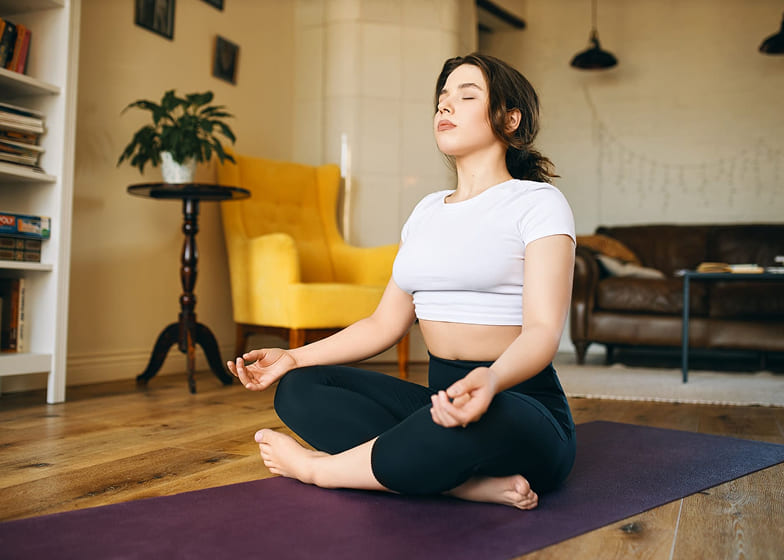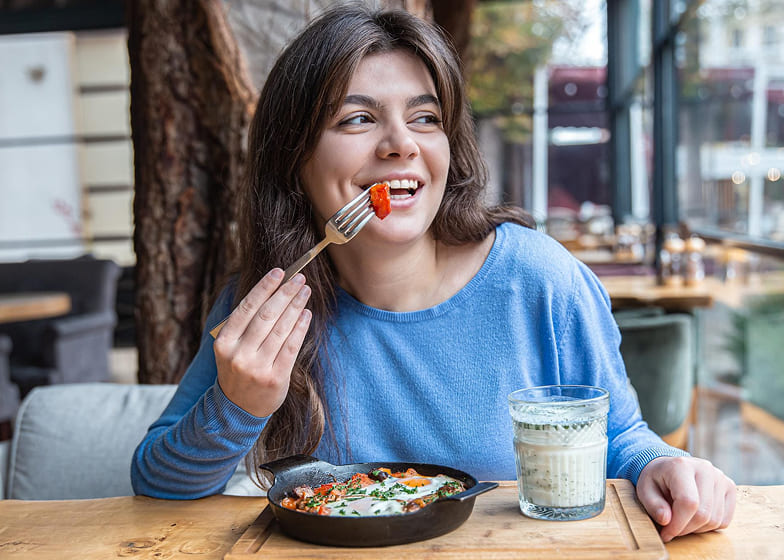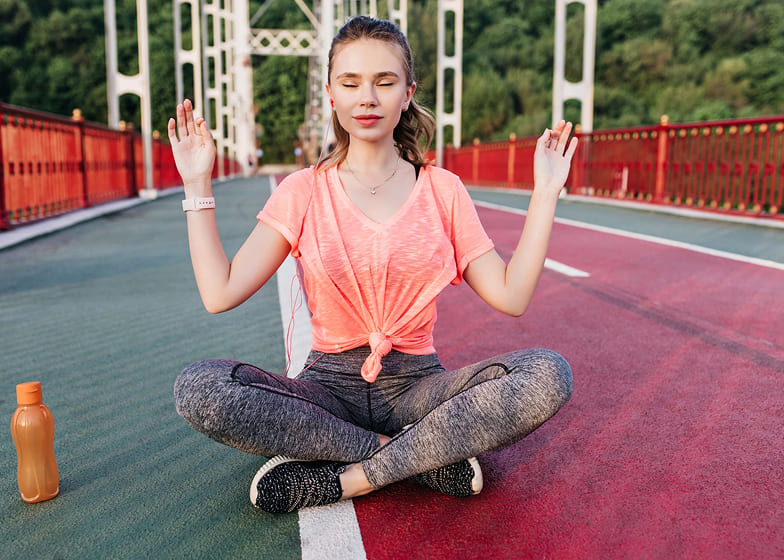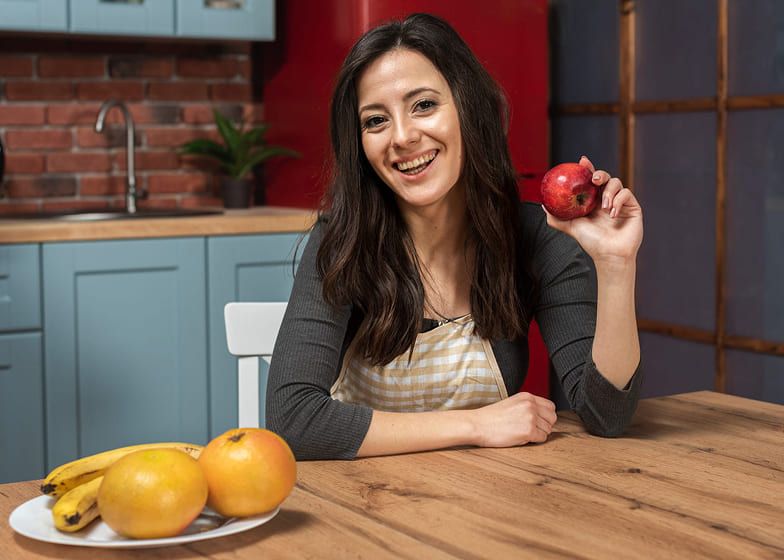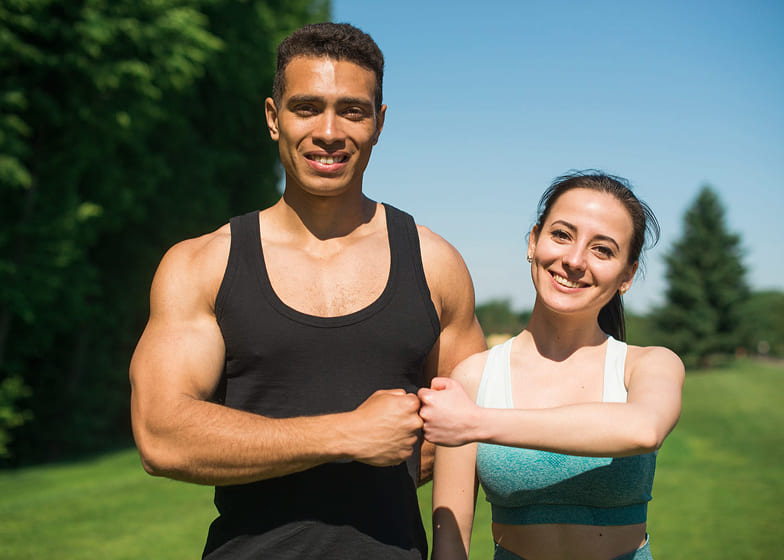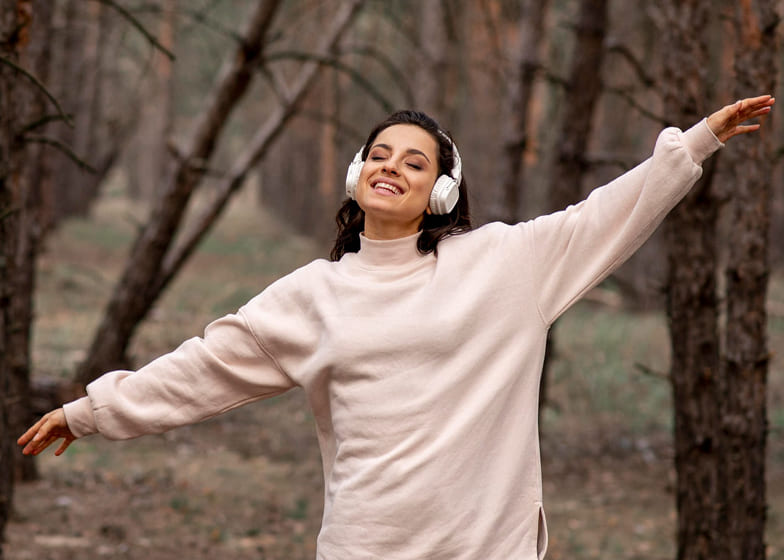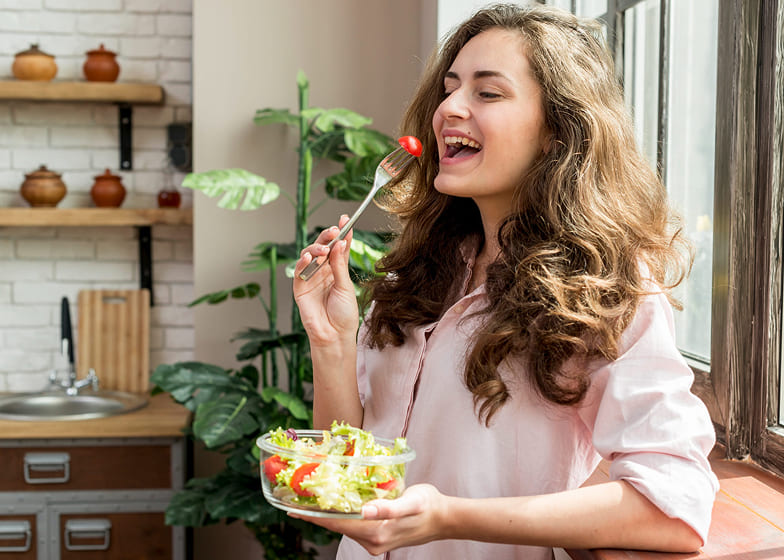Yoga is an ancient practice that combines physical postures, breathing techniques, and mindfulness to enhance overall well-being. For beginners, yoga offers a gentle yet powerful way to improve flexibility, balance, and body awareness. It allows you to reconnect with your body, relieve tension, and cultivate inner calm while gradually building strength. The beauty of yoga lies in its adaptability — anyone, regardless of age or fitness level, can start and experience its transformative benefits.
Flexibility and balance are two key aspects of physical health that yoga naturally enhances. Through consistent practice, yoga stretches tight muscles, improves joint mobility, and increases the range of motion. Poses like the Downward-Facing Dog, Cat-Cow Stretch, and Forward Fold gently lengthen muscles and release stiffness caused by sedentary lifestyles. Improved flexibility not only reduces the risk of injury but also supports better posture and movement efficiency in daily life.
Balance-focused poses such as Tree Pose, Warrior III, and Mountain Pose strengthen the core and stabilizing muscles. These poses help you develop coordination, concentration, and a stronger mind-body connection. Over time, practicing balance in yoga translates into improved physical stability and mental composure — helping you stay centered even during life’s challenges.
For beginners, the key to success in yoga is consistency, patience, and mindful practice rather than perfection. Starting with simple poses, guided sessions, and deep breathing allows you to gradually build strength and confidence. With time, yoga becomes more than just exercise — it becomes a holistic journey that nurtures flexibility, balance, and inner peace, promoting both physical vitality and mental harmony.
Yoga for Beginners: Poses to Improve Flexibility and Balance
Mountain Pose (Tadasana): The Foundation of Balance
The Mountain Pose may appear simple, but it is the foundation of all standing yoga poses. It teaches proper alignment and body awareness, helping you establish stability and focus. Standing tall with your feet together, shoulders relaxed, and spine straight encourages better posture and balance.
As you practice Tadasana, you learn to engage your core, distribute your weight evenly, and feel grounded through your feet. This pose helps correct postural imbalances caused by sitting or standing for long periods. It also strengthens the legs, ankles, and back while promoting mental stillness and concentration.
Regular practice of Mountain Pose trains your body to remain steady and calm — both physically and mentally. It’s an excellent starting point for beginners to connect with their breath, center their energy, and prepare for more complex balance poses.
Downward-Facing Dog (Adho Mukha Svanasana): Enhancing Flexibility and Circulation
Downward-Facing Dog is one of the most recognized yoga poses and an excellent stretch for the entire body. It strengthens the arms, shoulders, and legs while deeply stretching the hamstrings, calves, and spine. For beginners, it’s a perfect introduction to improving flexibility through active stretching.
As you press your hands and feet firmly into the mat, the body forms an inverted “V” shape, encouraging blood flow to the brain and relieving tension in the back and shoulders. This improved circulation boosts energy and reduces fatigue. With consistent practice, your muscles elongate, enhancing your overall flexibility and endurance.
This pose also promotes mental clarity by calming the nervous system. Each breath in Downward Dog brings oxygen to your muscles, helping release built-up tension. Over time, it not only enhances physical flexibility but also fosters emotional balance and focus.
Cat-Cow Stretch (Marjaryasana-Bitilasana): Flexibility Through Flow
The Cat-Cow sequence is a gentle, flowing movement that increases spinal flexibility and warms up the body. It involves alternating between arching and rounding the spine in sync with your breath — promoting coordination between movement and mindfulness.
This pose relieves stiffness in the neck, shoulders, and lower back — areas that often carry tension due to stress or poor posture. The fluid motion massages the spine and stimulates the abdominal organs, supporting better digestion and relaxation.
Practicing Cat-Cow regularly encourages a more supple spine and improved mobility in your torso. It’s especially beneficial for beginners who need to loosen tight muscles before attempting deeper stretches. The rhythmic breathing pattern also calms the mind, making it a great way to begin or end a yoga session.
Tree Pose (Vrikshasana): Cultivating Balance and Focus
Tree Pose is a classic balancing posture that strengthens your legs, core, and focus. By standing on one leg and placing the other foot against the inner thigh or calf, you learn how to stabilize your body and calm your mind.
In the beginning, you may wobble or lose balance, but that’s part of the learning process. Each attempt helps you develop stronger coordination, patience, and mindfulness. The act of maintaining balance trains both your body and brain to stay centered, even when external conditions are unstable.
Over time, Tree Pose enhances your posture and concentration while toning the lower body. It’s not just a physical pose — it symbolizes growth, stability, and resilience. Just as a tree sways with the wind yet remains rooted, this pose reminds you to stay grounded amidst life’s challenges.
Warrior II (Virabhadrasana II): Strength and Flexibility Combined
Warrior II builds strength in the legs, hips, and shoulders while increasing flexibility in the groin and chest. It also teaches endurance and mental focus, making it an empowering pose for beginners.
As you hold the posture, extending your arms parallel to the ground and gazing forward, you engage multiple muscle groups simultaneously. This strengthens your core and improves stability while opening up tight areas in your lower body.
The steady stance of Warrior II encourages inner strength and confidence. Physically, it enhances flexibility in the hips and shoulders; mentally, it teaches perseverance and mindfulness. Practicing this pose regularly cultivates both physical power and emotional steadiness.
Triangle Pose (Trikonasana): Stretching and Alignment
Triangle Pose is excellent for lengthening the sides of the body, improving flexibility, and strengthening the legs. It encourages proper alignment and balance while providing a deep stretch to the spine, hamstrings, and chest.
By extending one hand toward the floor and the other toward the sky, you open the torso and create space between the ribs, enhancing lung capacity and breathing. This pose also improves digestion and circulation, as it stimulates the abdominal organs.
For beginners, Triangle Pose develops body awareness and balance while relieving tension in the lower back. Its expansive nature promotes both physical and mental openness — helping you feel lighter and more centered.
Seated Forward Bend (Paschimottanasana): Increasing Flexibility and Calmness
The Seated Forward Bend is a deeply relaxing stretch that targets the hamstrings, spine, and shoulders. It encourages introspection and mindfulness as you fold forward, releasing tension and quieting the mind.
This pose enhances flexibility in the back and legs while improving circulation to the pelvic area. As you practice, it’s important to move gently and use your breath to deepen the stretch without strain.
Beyond physical benefits, the Seated Forward Bend has a calming effect on the nervous system. It reduces stress, anxiety, and fatigue, making it a perfect posture to include in evening or restorative yoga sessions.
Bridge Pose (Setu Bandhasana): Building Strength and Stability
Bridge Pose strengthens the back, glutes, and hamstrings while opening the chest and spine. It’s an energizing pose that promotes flexibility in the front body and stability in the back body.
When lifting your hips off the mat, you engage the core and legs, building strength and improving posture. The pose also helps counteract the effects of sitting for long hours by stretching the hip flexors and chest.
In addition to physical benefits, Bridge Pose is known for stimulating the thyroid gland and calming the mind. It bridges the connection between effort and relaxation, leaving you refreshed and balanced after practice.
Child’s Pose (Balasana): Restoring Balance and Relaxation
Child’s Pose is a resting posture that promotes deep relaxation and stretches the hips, thighs, and spine. It’s often used between challenging poses to help the body and mind recover.
By folding forward and resting your forehead on the mat, you create a soothing pressure that reduces tension and encourages mindfulness. Deep breathing in this position helps calm the nervous system and relieve stress.
For beginners, Child’s Pose serves as a reminder that rest is an essential part of progress. It cultivates patience, humility, and inner peace — key elements of both yoga and everyday life.
Corpse Pose (Savasana): The Art of Complete Relaxation
Corpse Pose marks the end of most yoga sessions and represents stillness, awareness, and rejuvenation. Though it seems simple, lying motionless on the mat requires mindful relaxation of every muscle and thought.
This pose allows your body to absorb the physical benefits of yoga while your mind enters a deep state of calm. It reduces stress, lowers blood pressure, and restores mental clarity.
Practicing Savasana regularly teaches you the power of letting go — of tension, expectations, and distractions. It’s the ultimate reminder that stillness is as vital to balance as movement.
Benefits
- Improves Flexibility – Regular yoga practice gently stretches muscles and joints, increasing range of motion and reducing stiffness.
- Enhances Balance – Balance poses strengthen your core and stabilizing muscles, improving coordination and posture.
- Reduces Stress – Deep breathing and mindfulness in yoga calm the mind, lower stress levels, and promote relaxation.
- Builds Strength – Holding yoga poses builds muscle strength and endurance without putting pressure on joints.
- Boosts Focus and Awareness – Yoga encourages mindfulness, helping you stay present, improve focus, and connect body with mind.
- Supports Better Posture – Strengthening the core and spine alignment improves posture and reduces back pain.
- Improves Circulation – Stretching and movement increase blood flow, energizing the body and aiding recovery.
- Promotes Better Sleep – Relaxation-focused poses and breathing help reduce insomnia and improve sleep quality.
- Enhances Energy Levels – Yoga revitalizes the body by improving oxygen flow and reducing fatigue.
- Encourages Emotional Balance – The combination of movement and mindfulness promotes inner calm, confidence, and emotional stability.
Summary
Yoga for beginners is a powerful way to enhance both physical and mental well-being by improving flexibility, strength, and inner balance. Through foundational poses such as Mountain Pose, Downward Dog, Tree Pose, and Warrior II, beginners can learn to connect breath with movement, increase body awareness, and gradually build stability. These postures not only stretch and strengthen muscles but also calm the mind, reduce stress, and improve focus. With regular practice, yoga becomes more than just a physical exercise — it transforms into a mindful journey that harmonizes the body and mind, helping you feel grounded, energized, and centered in everyday life.

